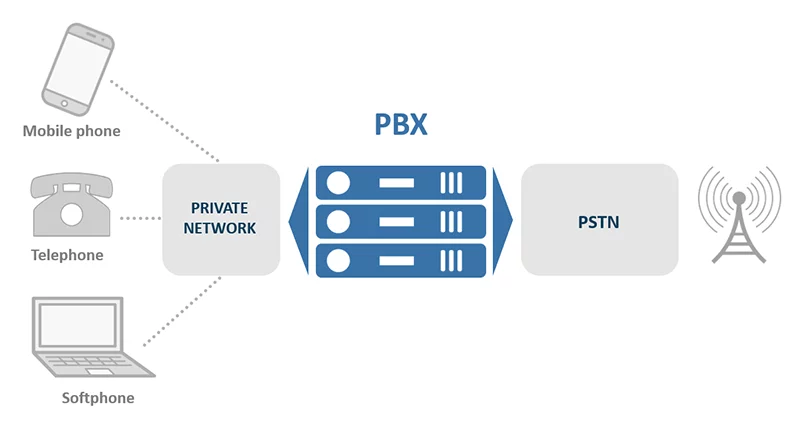In the modern digital landscape, data warehouse services are crucial for organizations looking to make informed decisions based on comprehensive data analysis. A data warehouse is a system used for reporting and data analysis, serving as a central repository of integrated data from one or more disparate sources. This guide will delve into what data warehouse services are, why they are important, and what factors to consider when choosing a service.
Understanding Data Warehouse Services
A data warehouse aggregates data from various sources, whether internal or external, into a single, comprehensive database. By consolidating different data streams, it enables more efficient querying and analysis. Data warehouse services can be managed on-premises or provided as part of a cloud-based solution.
Key Components:
- Data Integration: This involves extracting data from disparate sources, transforming it (cleaning, enriching, standardizing), and loading it into the warehouse (ETL).
- Storage: Data is stored in a structured format, optimized for fast retrieval and analysis.
- Analysis: Tools and functionalities that allow for querying, reporting, and analyzing the stored data.
- Management: Administrative capabilities for data governance, security, and compliance.
The Importance of Data Warehouse Services
Strategic Decision Making: By providing comprehensive data insights, data warehouses support strategic planning and decision-making processes. They help identify trends, forecast outcomes, and provide a solid data foundation for high-level decisions.
Enhanced Data Quality and Consistency: Centralizing data storage and having robust ETL processes in place ensure that all organizational data is consistent, accurate, and readily available. This improves the quality of data analytics and business intelligence processes.
Performance and Scalability: Data warehouse services are designed to handle large volumes of data and complex queries efficiently. They support scalability, making them suitable for businesses as they grow.
User Accessibility: By organizing data into a consolidated format, data warehouses make it easier for business analysts, data scientists, and decision-makers to access and work with data without needing specialized technical skills.
Choosing the Right Data Warehouse Service
1. Scalability and Performance Consider services that can scale easily to accommodate growing data needs without compromising performance. This includes not only storage but also the capability to perform fast data processing and querying.
2. Cost Effectiveness Cost is a major factor, especially for small to medium-sized enterprises. Compare services based on not only upfront costs but also long-term operational expenses including management, updates, and scaling.
3. Security Features Given the critical nature of stored data, the chosen service should have robust security measures in place. This includes data encryption, secure data transfer protocols, and compliance with international data protection regulations.
4. Integration Capabilities The ability to integrate seamlessly with existing systems and data sources is crucial. The service should support standard data integration protocols and offer pre-built connectors for popular data sources.
5. Analytics and Reporting Tools A good data warehouse service should come equipped with analytical tools that allow users to extract actionable insights directly from the warehouse without requiring additional software.
6. Support and Reliability Reliable customer support and a strong service-level agreement (SLA) ensure that any issues can be promptly addressed. Downtime can be costly, so choose a provider known for reliability and excellent customer service.
7. Data Governance and Compliance Ensure that the service complies with relevant industry standards and regulations. This is crucial for organizations in sectors like healthcare and finance, where data handling is stringently regulated.
Popular Data Warehouse Services
- Amazon Redshift: Known for its fast performance and scalability, it integrates well with other AWS services.
- Google BigQuery: A fully managed service that excels in handling large-scale analytics with a pay-as-you-go model.
- Microsoft Azure SQL Data Warehouse: Offers deep integration with other Microsoft services and tools, making it a favorite for businesses already invested in the Microsoft ecosystem.
- Snowflake: Gains popularity for its unique architecture that separates compute from storage, allowing it to quickly scale and perform queries.
Building on the fundamentals of data warehouse services, it’s crucial to understand how to effectively implement and optimize these systems. We’ll explore the technical considerations, implementation strategies, and best practices for deploying and maintaining a robust data warehouse environment.
Technical Considerations for Data Warehouse Implementation
Data Modeling: Data modeling is a critical preliminary step. It involves defining how data will be stored, connected, and accessed within the warehouse. Common models include the star schema, snowflake schema, and normalized approach. Each model has its benefits and is suited to different types of querying and data relationships.
Hardware and Infrastructure: Whether on-premises or cloud-based, the choice of hardware and infrastructure impacts performance, scalability, and cost. On-premises solutions require significant upfront investment in physical servers and storage, whereas cloud solutions offer flexibility and scalability but need careful selection to optimize costs and performance.
Data Security and Encryption: Implementing advanced security measures to protect data both at rest and in transit is non-negotiable. This includes using encryption, secure access protocols, and network security practices to safeguard data from unauthorized access and breaches.
Data Quality Management: Ensuring data quality is pivotal for reliable analytics. This involves processes and tools for continually cleaning, validating, and standardizing incoming data to maintain the integrity of the data warehouse.
Implementation Strategies
Phased Rollout: Implementing a data warehouse can be a large undertaking. A phased approach allows for manageable, staged deployments that help mitigate risk. Start with a pilot project that incorporates critical data elements and expands gradually, integrating more data sources and complex analytics capabilities.
User Training and Support: A successful implementation includes comprehensive training and ongoing support for users. Ensuring that users understand how to access and utilize the warehouse effectively will maximize its value.
Continuous Monitoring and Optimization: Once operational, continuously monitor the system’s performance and user engagement. Use this data to optimize queries, update models, and improve the overall functionality of the data warehouse.
Best Practices for Data Warehouse Optimization
Automate ETL Processes: Automation of Extract, Transform, and Load (ETL) processes not only saves time but also reduces errors associated with manual data handling. This is crucial for maintaining the efficiency and reliability of data flows into the warehouse.
Implement Business Intelligence (BI) Tools: Integrating BI tools can enhance the capabilities of a data warehouse by providing advanced reporting, visualization, and analytics options. This enables end-users to derive meaningful insights more easily and supports data-driven decision-making across the organization.
Regular Data Audits: Regular audits help ensure that the data remains accurate, relevant, and secure. They also help in identifying any inefficiencies or anomalies in the system that could affect data integrity or performance.
Scalability Planning: Plan for future growth by designing a scalable data warehouse. This means considering not just the increase in data volume but also the potential for more complex queries and the integration of new data sources.
Advanced Applications of Data Warehouses
Real-Time Data Processing: Incorporating real-time data processing capabilities can significantly enhance the responsiveness of a data warehouse. This is particularly important for businesses that require up-to-the-minute analytics to make quick decisions, such as those in finance or e-commerce.
Predictive Analytics and Machine Learning: Use machine learning algorithms and predictive analytics within your data warehouse to forecast trends and behaviors. This can transform how businesses plan for the future, allowing for more precise targeting and strategizing.
Integration with External Data Sources: Enhancing a data warehouse with external data sources, such as social media feeds, economic reports, or even IoT device data, can provide broader insights and improve the accuracy of predictive models.
Case Studies
Retail Chain Optimization: A global retail chain implemented a data warehouse to analyze customer behavior across multiple channels. By using data analytics, the company personalized marketing strategies and optimized inventory management, significantly increasing sales.
Healthcare Data Integration: A healthcare provider utilizes a data warehouse to integrate patient data from various sources. This enabled comprehensive analytics that improved patient care outcomes and operational efficiency.
Banking Fraud Detection: A financial institution leveraged its data warehouse for real-time transaction monitoring and fraud detection. Using complex algorithms, the bank was able to identify and prevent fraudulent activities more effectively
Conclusion
The implementation and optimization of a data warehouse require thoughtful planning, robust technology, and ongoing management. By following best practices and continuously adapting to new data needs and technological advancements, organizations can maximize the benefits of their data warehouse investments. This strategic approach not only enhances operational efficiency but also drives innovation and competitive advantage in today’s data-driven world.















Leave a Reply